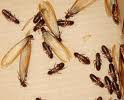:::::::::::::::::::::::::::::::::::::::::::::::::::::::::::::::::::::::::::::::::::::::::::::::::::::
Pig, pigs
***** Location: Kenya
***** Season: Topic
***** Category: Animal
*****************************
Explanation
Regarding the pig as a kigo, we cannot say for sure that it can be a kigo in Nairobi, since pigs roam freely on the streets and in the village of Soweto.
However, during the rain season, they are out there in plenty since there is plenty of stagnant water and mud for them to allow in.
In the dry season, pigs wallow in the open sewerage rivulets that flow freely from the pit latrines in the Soweto village.
Pigs are also present at the dump sites furrowing for food left-overs and worms.
My most horrifying experience with pigs in Soweto was last year 2009 one February morning when I came across a group of dumbfounded women looking wordlessly at a pig devouring a dead baby, which it had picked from a nearby dump site.
I am not going to eat pork in a long while!
More about the pigs in Soweto/Kayole Villages.
The roaming pigs are owned by some residents, and given that rearing them is an expensive affair, the pig farmers opt for the easier option: allowing the animals freedom to scavenger for food around the village. The pig food is plenty and freely available. At market stalls, vegetable remains and fruit peelings are readily available; in the leaking pit latrine trenches, maggots and earthworms are freely available.
Pigs are a lucrative business. One adult pig costs between 16,000/- to 20,000/- Kshs. almost the same price as a fully grown cow. Now the many pork kiosks in Kayole/Soweto get their pork supplies from these roaming pigs.
A word of caution to the fans of pork, though: roaming pigs act as pathogens to certain worms and we should ensure the meet is thoroughly boiled or fried. The best pork is one from confined pigs which are fed and cared for by a farmer himself.
And have you ever come across roaming goats that feed on mandazi?
It would be very interesting to pay a visit to our Soweto/Kayole Village. Our goats and pigs are so domesticated and pet that they feed not only on mandazi, but also cakes! That is not all: there are plenty of roaming dogs too who mingle freely with the above animals to form a very unique family. The only irony is that when pigs or goats are slaughtered, the dogs sit patiently outside the pork and bacon shops waiting for their share of their colleagues' left overs!
muddy road--
a black goat grabs mandazi
from a deserted stall
pork butchery--
a dog waits patiently
for the bones
Patrick Wafula
Kenya Saijiki Forum
mandazi
A traditional donut-like breakfast food also sold all over East Africa as a warm snack.
:::::::::::::::::::::::::::::::::::::::::::::::::::::::::::::::::::::::::::::::::::::::::::::::::::::
Photo Isabelle Prondzynski
:::::::::::::::::::::::::::::::::::::::::::::::::::::::::::::::::::::::::::::::::::::::::::::::::::::
a story from Malaba - Teso District, Kenya
James is thirty eight years old and is married to a business lady. Together they have three children: two are boys and one is a girl. The boys are big and in high school while the last born is in baby class. The wife’s business is a grocery with a specialty in selling ground nuts from Uganda.
James started his pig business three years ago . . .
Read the full story here:
source : www.kiva.org
*****************************
Worldwide use
Japan
. WASHOKU
Pig and Pork (buta, ton 豚 ぶた)
*****************************
Things found on the way
*****************************
HAIKU
children shout at a pig
creeping in stagnant muddy water-
sunny morning
yamame
Feb 2010
:::::::::::::::::::::::::::::::::::::::::::::::::::::::::::::::::::::::::::::::::::::::::::::::::::::
hot afternoon --
a pig eating crunched biscuits
on the road
Antony Mwangi
March 2010
:::::::::::::::::::::::::::::::::::::::::::::::::::::::::::::::::::::::::::::::::::::::::::::::::::::
hot afternoon--
lively piglets frisk in the
muddy water
Caleb Mutua
Kenya Saijiki Forum, Feb. 2009
:::::::::::::::::::::::::::::::::::::::::::::::::::::::::::::::::::::::::::::::::::::::::::::::::::::
two pigs
lie in the mud . . .
become so dirty
Mourice Opondo
May 2007
:::::::::::::::::::::::::::::::::::::::::::::::::::::::::::::::::::::::::::::::::::::::::::::::::::::
two piglets eat
sweet potato peelings --
grey morning
Patrick Wafula
September 2010
:::::::::::::::::::::::::::::::::::::::::::::::::::::::::::::::::::::::::::::::::::::::::::::::::::::

a pig
running down the sewage --
Kibera
Margreta Nzilili
Kenya Saijiki Forum, Aug. 2007
Kibera is one of the most pronounced slums within Kenya.
Kibera, Kenya is the largest slum in Kenya and is home to an estimate 1.2 million people. It is an illegal settlement with no government services including electricity, water, sewage and garbage pickup. When it rains all the garbage, sewage and dirt wash down the hills into the trench.
source : www.adventures.org
:::::::::::::::::::::::::::::::::::::::::::::::::::::::::::::::::::::::::::::::::::::::::::::::::::::
a piglet sheltering
under an old hand cart -
scorching sun
Andrew Otinga
January 2011
:::::::::::::::::::::::::::::::::::::::::::::::::::::::::::::::::::::::::::::::::::::::::::::::::::::
snorting pig
busy searching and searching--
garbage heap
Abraham Muuo
:::::::::::::::::::::::::::::::::::::::::::::::::::::::::::::::::::::::::::::::::::::::::::::::::::::
a pig's snout sinks
in a muddy dust bin--
evening snack
black mud
on a pig's snout--
stroll by the stream
Brian Etole
*****************************
Related words
***** Nairobi City
:::::::::::::::::::::::::::::::::::::::::::::::::::::::::::::::::::::::::::::::::::::::::::::::::::::













